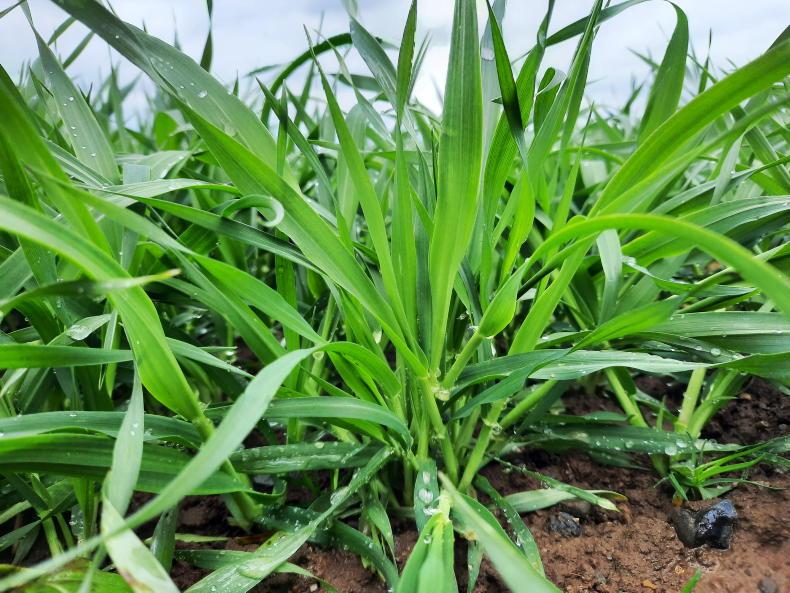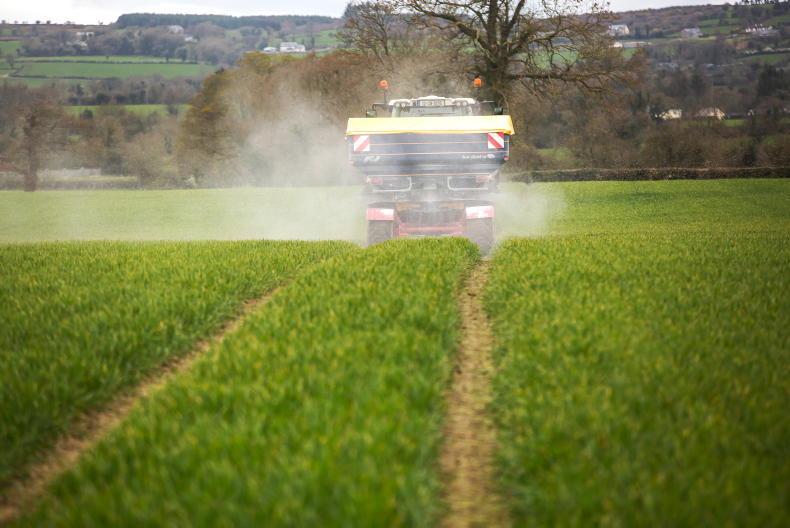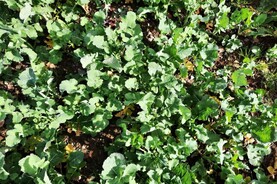High nitrogen prices have made farmers more aware of its cost and the need to use applied nitrogen wisely. With CAN prices increased from around €250/t to above €1,000/t currently, it is important that every kilogram of nitrogen applied produces a return in crop or product terms which can be valued greater than its cost.So while there is a need to be extra careful about nitrogen rates this year, there has always been an obligation to operate within the recommended rates set down for crops. This is based on the nitrogen index system which gives recommendations for the amount to use at different index levels which are largely dependent on previous land use. This is a legal obligation on all farmers.
High nitrogen prices have made farmers more aware of its cost and the need to use applied nitrogen wisely. With CAN prices increased from around €250/t to above €1,000/t currently, it is important that every kilogram of nitrogen applied produces a return in crop or product terms which can be valued greater than its cost.
So while there is a need to be extra careful about nitrogen rates this year, there has always been an obligation to operate within the recommended rates set down for crops. This is based on the nitrogen index system which gives recommendations for the amount to use at different index levels which are largely dependent on previous land use. This is a legal obligation on all farmers.
Many farmers are unaware of our obligations to operate within these legal constraints. Some may not even be aware of the nitrogen index and our obligations to be guided by it. The maximum rates that we can use on individual crops are set out in law and exceeding them can result in penalties or fines.
The principle behind the nitrogen index system is based on the predicted release of nitrogen from the soil to the growing crop.
This is influenced by the previous crop and other land uses such as grassland, permanent pasture, pulse crops etc. Because most of the land used to grow crops is now in almost permanent tillage year after year, growers need to be aware of the relevant rates applicable to each crop and the field’s soil nitrogen index.
In the fertiliser recommendations handbook, more correctly titled Major and Micro Nutrient Advice for Productive Agricultural Crops, and often referred to as Teagasc’s green book, the nitrogen index system is described in Table 6-2, which is shown in Table 1 here.
In continuous tillage systems it is usually only necessary to consider the last crop grown to work out the N Index for a field.
However, where a tillage crop might follow long leys or permanent pasture, it is necessary to consider the field history for more than one year and how that grass was managed.
So for crops sown after longer leys, the relevant indices are set out in Table 6-3 in the green book, which is shown as Table 2 here.
Organic fertilisers
While not specified in the indices, previous applications of animal manures must also be taken into account when calculating the appropriate rate to apply. Because all organic manures have a proportion of their nitrogen in a form that is not available in the year of application, this becomes available over time and can therefore add to the supply of nitrogen from the soil to the crop. This should be factored in by growers.
Most land in tillage is now primarily in a rotation of annual crops and where it is going from cereal to cereal, this is Index 1. Where the preceding crop was a cereal or maize, or a vegetable crop which received less than 200kg N/ha, the following crop is regarded as being at Index 1 (Table 1).
Where the previous crop was beet, potatoes, oilseed rape, peas, beans, a one-to-four-year ley, or a vegetable crop that received more than 200kg N/ha, this crop is in an Index 2 soil for nitrogen (Table 1).

Nitrogen is important for yield but make best use of soil N when calculating what you may need to apply.
The previous crops that make a field Index 2 are judged to leave more residual nitrogen for the following crop, hence the need to apply less. This is easy to understand with peas and beans because they produce their own nitrogen, but it could be more challenging with oilseed rape where canopy management is used to reduce applied N.
Situations where a crop was grazed, or where organic manures had been applied in a number of the previous seasons, also increase the likelihood that more N is likely to be available, thus providing an opportunity to apply less N this season. Such situations should be viewed as a useful opportunity rather than a constraint.
For those who will grow a tillage crop after grass this year, such fields are likely to be at Index 3 or 4 (Table 2). This means significantly lower rates of N (see Table 3).
The actual maximum rates that can be applied per crop at different soil N indices are shown in Table 3. So the maximum rate for an 11t/ha winter wheat crop in an Index 1 field will be 250kg N/ha (210 + 40 for the 2t higher yield potential), but if this followed beans the max rate is 220kg (180 + 40) as it is an Index 2 slot. And on a crop of spring barley in an Index 4 field coming from grass, the max rate is 40kg N/ha, or 60kg if the proven farm yield was 7.5 t/ha in a recent year (Table 3).
In any year, the sum of all the allowances for each individual field or parcel in the different indices adds up to the maximum amount allowed per farm. This quantity is subject to inspection in cross-compliance. So growers need to be aware of these maximum rate allowances to avoid potential penalties and to optimise costs.

Nitrogen is an important fertiliser but its use is constrained by law through the soil N index system. \Philip Doyle
Two other allowances apply: wheat grown specifically for milling can receive an additional 30kg N/ha to raise its protein level, while malting barley growers can add an additional 20kg N/ha where they have a need to raise the protein content of some fields.
Nitrogen application rates for crop production are governed by the maximums set out in the green book.Soil index levels are mainly influenced by the previous crop or the history of previous land use.Rates can be increased where recent average farm yields are proven to be higher than the crop’s reference yield. An amount of grassland coming into crops this year is likely to be Index 4 or Index 3 for nitrogen and so quite low nitrogen rates must be used. 




SHARING OPTIONS: